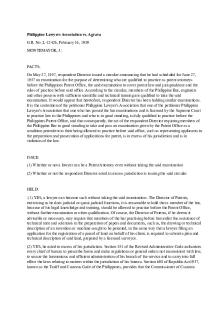As lawyers knowugdufgcuig;fuGFU;GSIUFSMBKJVXHJSFDKUYTAFSDYAs lawyers knowugdufgcuig;fuGFU;GSIUFSMBKJVXHJSFDKUYTAFSDYUTAFSDUYAFUYDFAWUYDFAUKWYTDFAKUYUTAFSDUYAFUYDFAWUYDFAUKWYTDFAKUYWDFUAYWFDLUAYWFDUYAD PDF

| Title | As lawyers knowugdufgcuig;fuGFU;GSIUFSMBKJVXHJSFDKUYTAFSDYAs lawyers knowugdufgcuig;fuGFU;GSIUFSMBKJVXHJSFDKUYTAFSDYUTAFSDUYAFUYDFAWUYDFAUKWYTDFAKUYUTAFSDUYAFUYDFAWUYDFAUKWYTDFAKUYWDFUAYWFDLUAYWFDUYAD |
|---|---|
| Author | Best |
| Course | Financial Accounting |
| Institution | İstanbul Gelişim Üniversitesi |
| Pages | 2 |
| File Size | 62.1 KB |
| File Type | |
| Total Downloads | 62 |
| Total Views | 165 |
Summary
As lawyers knowugdufgcuig;fuGFU;GSIUFSMBKJVXHJSFDKUYTAFSDYUTAFSDUYAFUYDFAWUYDFAUKWYTDFAKUYWDFUAYWFDLUAYWFDUYADAs lawyers knowugdufgcuig;fuGFU;GSIUFSMBKJVXHJSFDKUYTAFSDYUTAFSDUYAFUYDFAWUYDFAUKWYTDFAKUYWDFUAYWFDLUAYWFDUYADAs lawyers knowugdufgcuig;fuGFU;GSIUFSMBKJVXHJSFDKUYTAFSDYUTAFSDUYAFUYDFAWUYDFAU...
Description
As lawyers know, legal systems in countries around the world generally fall into one of two main categories: common law systems and civil law systems. There are roughly 150 countries that have what can be described as primarily civil law systems, whereas there are about 80 common law countries. The main difference between the two systems is that in common law countries, case law — in the form of published judicial opinions — is of primary importance, whereas in civil law systems, codified statutes predominate. But these divisions are not as clear-cut as they might seem. In fact, many countries use a mix of features from common and civil law systems. Understanding the differences between these systems first requires an understanding of their historical underpinnings. The Historical Origins of Common and Civil Law Systems The original source of the common law system can be traced back to the English monarchy, which used to issue formal orders called “writs” when justice needed to be done. Because writs were not sufficient to cover all situations, courts of equity were ultimately established to hear complaints and devise appropriate remedies based on equitable principles taken from many sources of authority (such as Roman law and “natural” law). As these decisions were collected and published, it became possible for courts to look up precedential opinions and apply them to current cases. And thus the common law developed. Civil law in other European nations, on the other hand, is generally traced back to the code of laws compiled by the Roman Emperor Justinian around 600 C.E. Authoritative legal codes with roots in these laws (or others) then developed over many centuries in various countries, leading to similar legal systems, each with their own sets of laws. Roles of a Lawyer and Judge in Each System In civil law countries, judges are often described as “investigators.” They generally take the lead in the proceedings by bringing charges, establishing facts through witness examination and applying remedies found in legal codes. Lawyers still represent the interests of their clients in civil proceedings, but have a less central role. As in common law systems, however, their tasks commonly include advising clients on points of law and preparing legal pleadings for filing with the court. But the importance of oral argument, incourt presentations and active lawyering in court are diminished when compared to a common law system. In addition, non-litigation legal tasks, such as will preparation and contract drafting, may be left to quasi-legal professionals who serve businesses and private individuals, and who may not have a post-university legal education or be licensed to practice before courts.
In contrast, in a common law country, lawyers make presentations to the judge (and sometimes the jury) and examine witnesses themselves. The proceedings are then “refereed” by the judge, who has somewhat greater flexibility than in a civil law system to fashion an appropriate remedy at the conclusion of the case. In these cases, lawyers stand before the court and attempt to persuade others on points of law and fact, and maintain a very active role in legal proceedings. And unlike certain civil law jurisdictions, in common law countries such as the United States, it is prohibited for anyone other than a fully licensed lawyer to prepare legal documents of any kind for another person or entity. This is the province of lawyers alone. As these descriptions show, lawyers almost always have a significant role to play in formal dispute resolution, no matter in which country they practice. But the specific tasks assigned to them tend to vary quite a bit. And outside the courtroom, tasks typically performed by lawyers in one country may be performed by skilled laypeople in another. Each country has its own traditions and policies, so for those who wish to know more about the role of legal practitioners in a particular nation it is important to do additional research. To provide readers with a jumping-off point, here are a few examples of countries that primarily practice common law or civil law. Common Law Countries:
The United States England India Canada
Civil Law Countries:
China Japan Germany France Spain Request More Information...
Similar Free PDFs

Lawyers Final 2
- 9 Pages

Internship Lawyers\' Database
- 15 Pages

492520954-Lawyers-Oath
- 1 Pages

Professional Ethics for Lawyers
- 68 Pages

Accounting-for-Lawyers
- 51 Pages

Professional Ethics for Lawyers
- 68 Pages

Professional Ethics for Lawyers-1
- 68 Pages

Lawyers Duty of Care in Torts
- 12 Pages
Popular Institutions
- Tinajero National High School - Annex
- Politeknik Caltex Riau
- Yokohama City University
- SGT University
- University of Al-Qadisiyah
- Divine Word College of Vigan
- Techniek College Rotterdam
- Universidade de Santiago
- Universiti Teknologi MARA Cawangan Johor Kampus Pasir Gudang
- Poltekkes Kemenkes Yogyakarta
- Baguio City National High School
- Colegio san marcos
- preparatoria uno
- Centro de Bachillerato Tecnológico Industrial y de Servicios No. 107
- Dalian Maritime University
- Quang Trung Secondary School
- Colegio Tecnológico en Informática
- Corporación Regional de Educación Superior
- Grupo CEDVA
- Dar Al Uloom University
- Centro de Estudios Preuniversitarios de la Universidad Nacional de Ingeniería
- 上智大学
- Aakash International School, Nuna Majara
- San Felipe Neri Catholic School
- Kang Chiao International School - New Taipei City
- Misamis Occidental National High School
- Institución Educativa Escuela Normal Juan Ladrilleros
- Kolehiyo ng Pantukan
- Batanes State College
- Instituto Continental
- Sekolah Menengah Kejuruan Kesehatan Kaltara (Tarakan)
- Colegio de La Inmaculada Concepcion - Cebu







